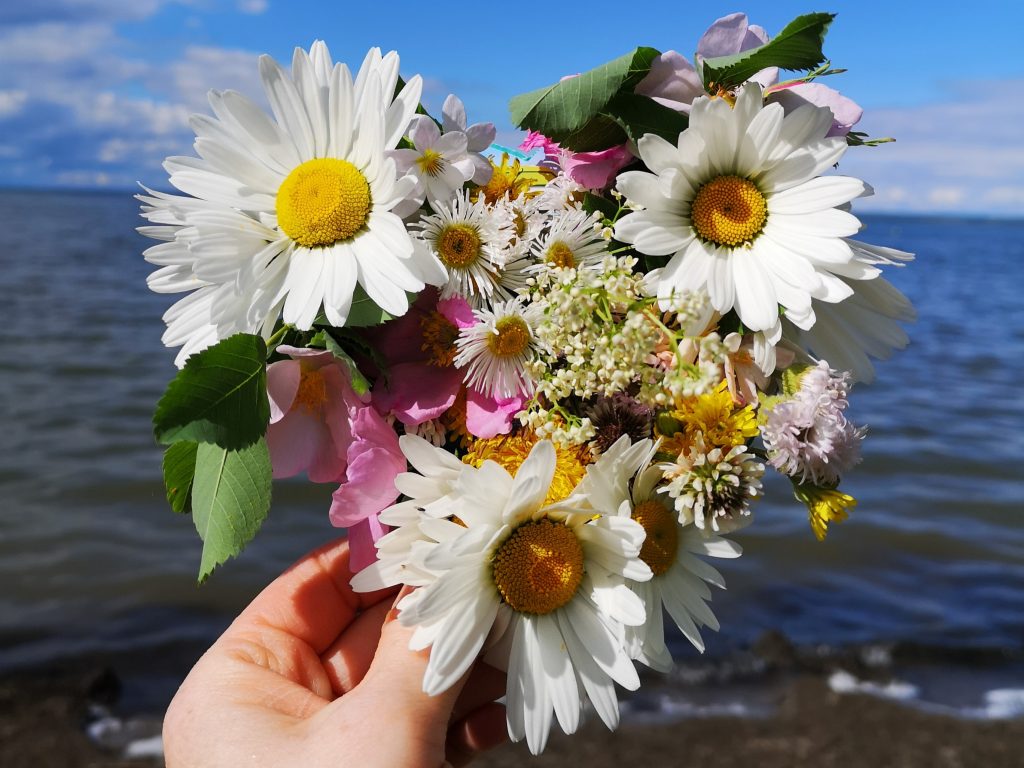Heart-Shaped Wildflower Bouquet

Going on a scavenger hunt for flowers is a fun way to spend a day. And it’s a great way to learn more about the flower species that grow in your local area!
What you need:
- Recycled cardboard such as an empty cereal box
- Scissors
- Sharpened pencil or pen
- Local flower or plant identification guide
What to do:
- Using your pen or pencil, draw a heart shape on your recycled cardboard.
- Follow the lines with your scissors to cut out the heart shape.
- Using your pen or pencil, carefully poke holes through the cardboard. Space the holes out and cover the entire shape.
- Go outside for a walk and look for flowers. Anywhere you see a patch of 10 or more flowers growing, pick one.
- Feed the flower stem through one of the holes in your cardboard heart. Keep looking until you have filled the entire heart!
- Take your heart-shaped flower bouquet home and find the flowers in your flower or plant identification guide.
All different types of flowers grow along trail edges and roadsides. Native flowers in the bouquet pictured here include wild rose, Canada violet, and tufted fleabane. Look these species up in your identification guide and see if you can point them out!
The most brilliant flower in this bouquet is oxeye daisy, which is actually a noxious weed in Alberta. This means that this beautiful flower is not naturally occurring in Alberta and can cause damage to our ecosystems by reducing biodiversity when it grows wild. In Alberta, we are not allowed to plant oxeye daisy in our gardens and if it grows in your yard, you are required to remove it (pulling it out by the roots before it goes to seed is best for small areas of growth). There are ornamental types of daisies that are okay to grow, so don’t go pulling daisies out of your garden just yet! Learn what the oxeye’s leaves and stems look like to help you identify this noxious weed.
Please note: Never pick a flower in a National Park, Provincial Park, or other protected area. Flowers are an important part of the ecosystem and enjoyed by many others when left intact.
This article originally ran in Nature Alberta Magazine - Summer 2022.
